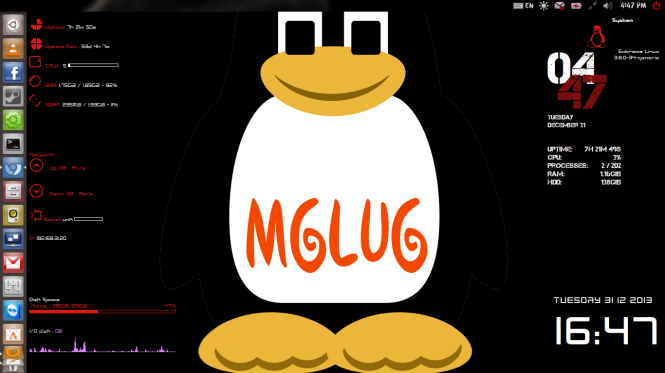Install Jitsi Meet Ubuntu Desktop

Install Jitsi 1.0 in Debian, Linux Mint and Ubuntu April 4, 2012 12:40 pm Jitsi is a multi-protocol, multi-platform voice and video instant messenger client. I have 'Ubuntu Server 16.04 LTS (HVM), SSD' with Jitsi Meet installed and working. What we need now it to enable the two functionalities: (1) Desktop Sharing (2) Meeting Record (mp4). Following this. Post a Project Explore. Install Jibri on Jitsi Meeting to enable Record file and Desktop Sharing.
I am late to answer, but I want to share some info with other people trying to run jitsi-meet on Windows. You can't use Prosody, so we will switch to Openfire. You can than go the embarrassingly simple way (install Openfire Meetings plugin through Openfire administration and you have jitsi-meet running), or the adventurous and not-that-simple way (built from sources): • Install Openfire, most values stay default or are based on your configuration. • Enable http-bind. Second grade sight word list pdf.
• Install Jitsi Focus Conference plugin (Jifoco) • To build the libs, you will need NodeJS and Python27 installed (I will assume you know how to use NodeJS). Clone the repository, install the dependencies and make some minor changes to webpack.config.js to actually build the sources on windows. I didn't manage to get them through PR, but I think I covered all of the changes in this Issue: • Change the config.js to point to your Openfire installation (I cheated here a bit and installed the OFMeet plugin to Openfire, opened the Jitsi-Meet window and copied config.js contents through Developer Tools - set up to connect to openfire) • Replace the virtual script includes to normal html includes and point them to your libs • You can use the libs to start jitsi-meet as you please. For example: I just created an empty Asp.Net MVC web application, changed the MVC router, added index.html and libs and it worked. (I remember having some problems, but they were tied more to MVC than to jitsi-meet) I hope I didn't forget something.
Our intentions are not to harm Microsoft software company but to give the possibility to those who can not pay for any piece of software out there. If you are keeping the software and want to use it longer than its trial time, we strongly encourage you purchasing the license key from Microsoft official website. Ms frontpage 2003 serial number. This should be your intention too, as a user, to fully evaluate Microsoft FrontPage 2003 without restrictions and then decide.
If you need anything specific, feel free to contact me.
Video chat on Jitsi Meet Jitsi is a collection of (VoIP), and applications for the,,,. The Jitsi project began with the Jitsi Desktop (previously known as SIP Communicator). With the growth of, the project team focus shifted to the Jitsi Video Bridge for allowing web-based multi-party video calling. Later the team added Jitsi Meet, a full video conferencing application that includes a web, Android, and iOS clients. Jitsi also operates meet.jit.si, a version of Jitsi Meet its hosts for free community use.
Other projects include; Jigasi, lib-jitsi-meet, Jidesha, and Jitsi. Jitsi has received support from various institutions such as the Foundation, the and the Region of Alsace and it has also had multiple participations in the program. Contents • • • • • • • • History [ ] Work on Jitsi (then SIP Communicator) started in 2003 in the context of a student project by Emil Ivov at the. It was originally released as an example video phone in the stack and later spun off as a standalone project. In 2009, Emil Ivov founded the BlueJimp company which has employed some of Jitsi's main contributors in order to offer professional support and development services related to the project. In 2011, after successfully adding support for audio/video communication over XMPP’s extensions, the project was renamed to Jitsi since it was no longer 'a SIP only Communicator'. This name originates from the ' (wires).

Jitsi introduced the Video Bridge in 2013 to support multiparty video calling with its Jitsi clients using a new Selective Forwarding Unit (SFU) architecture. Later that year initial support was added to the JitsiVideobridge allowing WebRTC calling from the browser. To demonstrate how JitsiVideobridge could be used as a production service, BlueJump offered a free use of its hosted system at meet.jit.si. On November 4, 2014, 'Jitsi + ' scored 6 out of 7 points on the 's secure messaging scorecard.
They lost a point because there has not been a recent independent code audit. On February 1, 2015, Hristo Terezov, Ingo Bauersachs and the rest of the team released version 2.6 from their stand at the 2015 event in Brussels. This release includes security fixes, removes support of the deprecated MSN protocol, along with SSLv3 in XMPP. Among other notable improvements, the OS X version bundles a Java 8 runtime, enables echo cancelling by default, and uses the CoreAudio subsystem. The Linux build addresses font issues with the GTK+ native LookAndFeel, and fixes some long standing issues about microphone level on call setup when using the PulseAudio sound system. This release also adds the embedded Java database to improve performance for users with huge configuration files, a feature which is disabled by default. A full list of changes is available on the project web site.